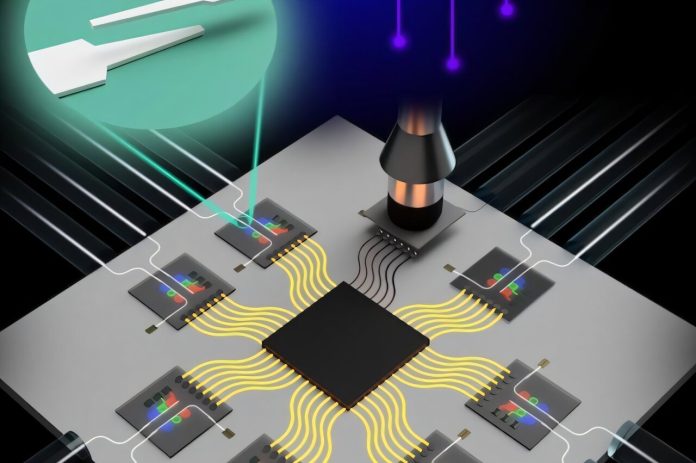
Researchers at MIT have found a cheaper, faster, and more efficient way to connect computer chips that use light—called photonics—with traditional chips that use electricity.
This could be a big step toward building the next generation of computers and communication systems, where light and electricity work together to handle massive amounts of data more efficiently.
As our digital world grows, so does the need for faster and more energy-efficient technology. Every year, we use more devices—from phones and GPS units to smart gadgets—all of which connect to the cloud and generate data.
According to MIT Professor Lionel Kimerling, this data traffic is growing a thousand times every ten years. But we can’t just keep using more and more energy to keep up.
Instead, we need smarter technology that can move data using less power.
That’s where photonics comes in. Moving data using light instead of electricity can be much more energy-efficient.
The idea is to let electronics handle the computing while photonics takes care of communication.
But there’s a problem: combining the two types of chips in a single package is expensive and difficult.
The alignment between the light source and the chip has to be extremely precise—almost down to a millionth of a meter—or it won’t work properly. Right now, this alignment is done one by one using lasers, which is slow and costly.
To solve this, MIT’s FUTUR-IC team—led by Professor Anu Agarwal—has developed a new device called an evanescent coupler. This small component makes it easier to connect photonic chips with electronic ones.
Traditional couplers connect at just one tiny point, which makes alignment very tricky. The new coupler, however, connects along a longer stretch, which gives much more room for error.
That means machines can put the chips together automatically, without needing a laser to test each connection.
The coupler also has another big advantage: it allows light to travel vertically between layers of chips. That’s a major breakthrough, because unlike electricity, light doesn’t like to make sharp turns.
This ability to direct light between stacked chips helps create compact, high-performance devices that waste less space and energy.
Graduate student Drew Weninger, who helped lead the project, says this new design could help the chip industry keep up with growing data demands while using less energy. He won a Best Student Paper Award for presenting the team’s work at a major microelectronics conference.
The new coupler can be made with equipment already used in today’s electronics factories, which keeps costs down.
That makes it a practical solution that could be adopted widely. The research was published in Advanced Engineering Materials and supported by MIT.nano and MIT’s Electronic-Photonic Packaging Consortium.
In short, this breakthrough brings us closer to computers and data centers that are not only faster but also greener—thanks to the power of light.



